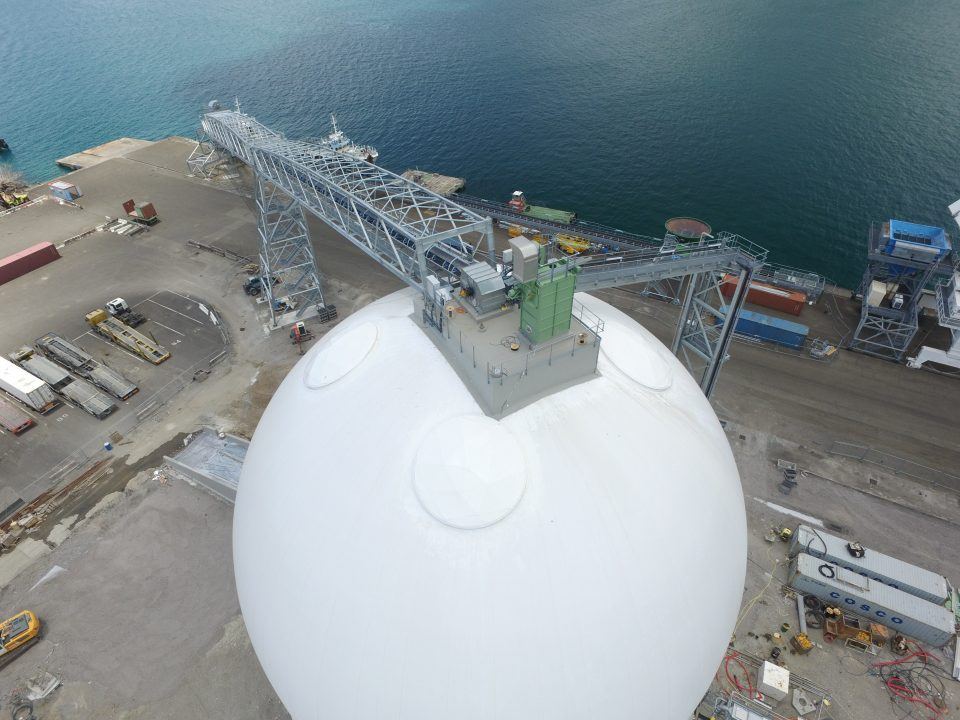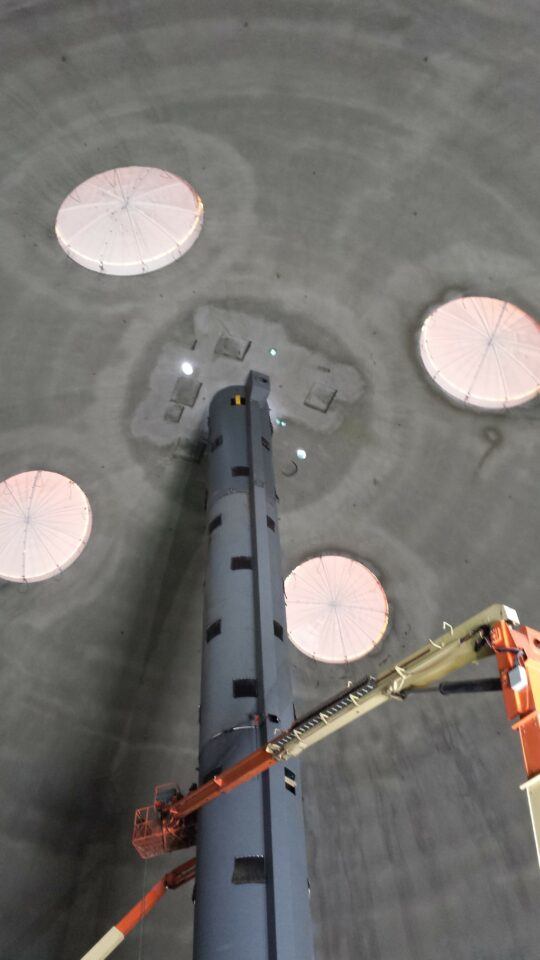Many wood-pellet companies are reaping the benefits of two innovative Dome Technology features: the filling tube and round explosion panels.
Filling tube
Wood-pellet companies working with Dome Technology have the option of installing a filling tube as an innovative way to load pellets with reduced dust and better product protection.
The filling tube is based on a concept common in coal and mining storages. A belt conveyor moves product into the top of the dome, where pellets enter the filling tube. Openings are incrementally located along the tube’s shaft, and product rolls through the openings and into the pile, resulting in smoother, more even pile creation. Dome Technology sales manager Lane Roberts said he is fielding more calls than ever about installing filling tubes.
Pellets loaded with a filling tube look cleaner and are stacked more uniformly. This mode of filling also reduces the likelihood and/or severity of deflagration. This is possible since the airborne dust concentration is reduced. Most dust is confined within the tube; as a result, the filling tube acts as a crucial part of a dome’s deflagration-mitigation plan.
The tube also protects product integrity, minimizing fines generated during the drawdown process by reducing the pressure head on the product flow line. Although there are no guarantees regarding the reduction of fines, experience shows considerable fine reduction.
Four filling tubes have been installed in four different wood-pellet domes, two for Savannah Bulk Terminal in Georgia, USA, and two for QSL in Quebec, Canada. Customers with a filling tube report lower fine percentages during ship loading than previously experienced.
According to Peeples Industries project manager Brad Orwig, the filling tubes in the Savannah domes have worked very well for the company since installation four years ago. “The pack factor has been reduced or completely eliminated. The stratified dust blanket has been reduced or eliminated, allowing a reduction of degradation during storage as well as improving the breathability of the pile,” he said, adding that on the discharge side, the shear within the pile is reduced.
An existing structure can be retrofitted to accommodate a filling tube, but the less-expensive option is to have the foundation planned and constructed with the filling tube in mind.
Explosion panels
Dome Technology has pioneered proprietary round explosion panels ideal for products prone to deflagration. Until now, square and rectangular explosion venting have been the norm, but Dome Technology’s round model has been and will continue to be installed on bulk-storage domes with significant advantages.
Whether a pre-manufactured rectangular panel or a metal cladding piece, a squared-off panel creates a weak spot. Round panels are preferable because there are no sharp corners for stress concentration.

The proprietary explosion vents are comprised of a circular geodesic steel lattice covered with the same PVC fabric used in the dome construction process. The panel is anchored to the dome with explosion-venting relief screws that remain secure during the design dead, live, and wind loads. But in the event of a deflagration event, the screws release the panel and allow for the release of the excessive internal pressure. The system is watertight and meets the required operational design loads.
In the event of an explosion, the fabric accepts the load and transfers it uniformly around the ring’s circumference. “Because it’s circular we can predict the load going to each of the fasteners really well,” said Jason South, Dome Technology Vice President of Engineering, Research, and Development. “If it were rectangular, the pressure going to each fastener could be different,” and more difficult to estimate.
For more information on these systems and others, contact our sales team.
